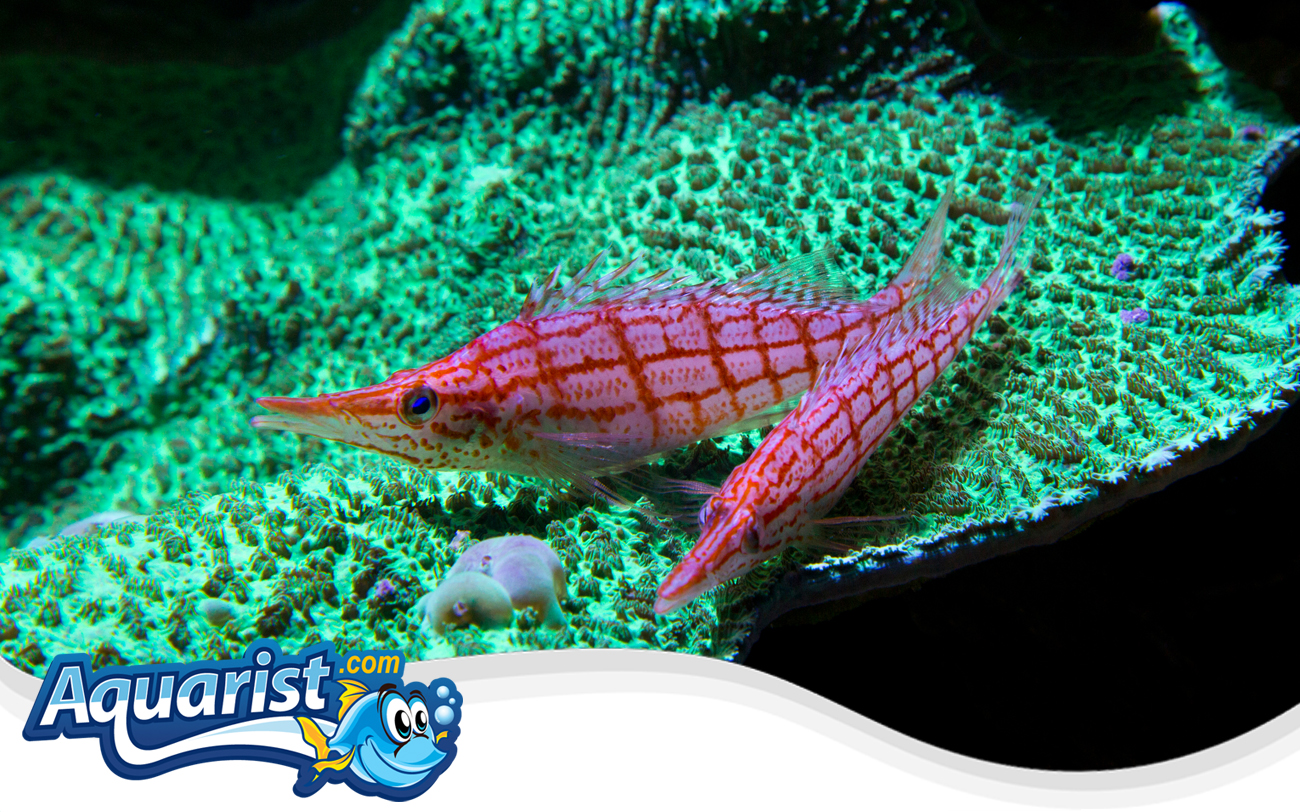Overview
- Found in tropical reef environments of the Indo-Pacific, typically near gorgonians and rocky outcrops.
- Recognized for its elongated snout, red and white checkerboard pattern, and keen hunting skills.
- Prefers to perch on coral branches, using its pectoral fins to stabilize itself while observing its surroundings.
- Highly alert and curious, often interacting with other fish and exploring its habitat.
Feeding
- Carnivorous, preying on small crustaceans, tiny fish, and zooplankton.
- Readily consumes frozen mysis shrimp, chopped seafood, and marine-based pellets.
- Benefits from a protein-rich diet to maintain energy levels and vibrant coloration.
- Multiple feedings per day ensure proper growth and support natural hunting instincts.
Habitat
- Prefers reef environments with coral structures, rocky ledges, and overhangs for perching.
- Often found resting on gorgonian corals, using them as lookout points for potential prey.
- Requires stable water conditions and a well-oxygenated environment to thrive.
- Best housed in aquariums with plenty of perching spots to replicate its natural habitat.
Fish Care
- Optimal water temperature: 76-82°F (24-28°C).
- pH level: 8.1-8.4, with a specific gravity of 1.023-1.026.
- Maintaining stable water quality prevents stress and promotes longevity.
- Regular maintenance and proper filtration help sustain a clean and balanced ecosystem.
Compatibility
- Moderately aggressive, may show dominance toward smaller tank mates.
- Best kept with other semi-aggressive species that can tolerate its territorial nature.
- Should not be housed with very small ornamental shrimp, as it may consider them prey.
- Coexists well in aquariums with sturdy rock formations and plenty of space.
Aquarium Behavior
- Frequently perches on coral branches, observing its surroundings before making quick movements.
- Known for its sudden bursts of speed when hunting prey.
- Displays intelligence and curiosity, often exploring different sections of the tank.
- Adapts well to captivity when provided with a structured environment and stable conditions.


